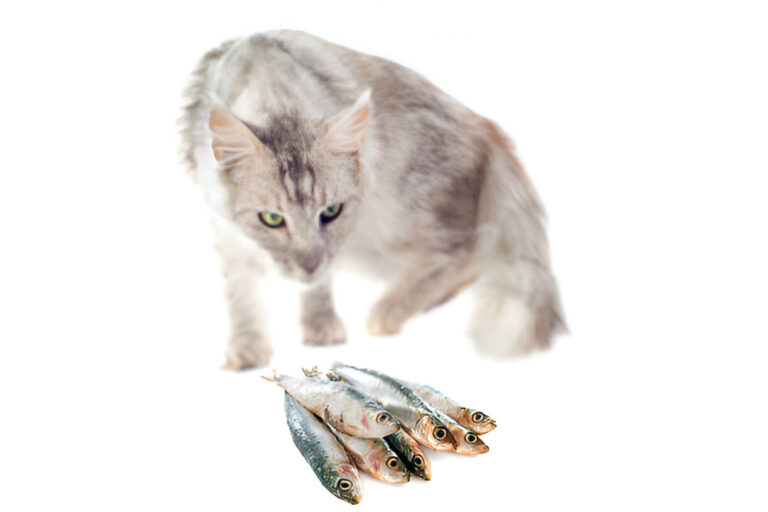Can You Eat Pawpaw Skin? Is Pawpaw Peel Edible and Safe to Eat?

The pawpaw is one of the most intriguing mysteries among tropical fruits. Its vibrant colors and luscious aroma are undeniably alluring, drawing us in with the promise of a sweet, exotic escape. But as we stand before this delectable marvel, a question arises: Can you eat pawpaw skin?
No, you should not eat pawpaw skin. Both the skin and seeds of pawpaw fruit are toxic to humans. They contain a toxin called annonacin, which can cause mild symptoms like vomiting or severe issues like nerve damage when ingested over a long period of time. It is important to only eat the delicious soft pulp of the pawpaw fruit and discard the skin
Yet, in the spirit of culinary exploration, we find ourselves on a quest to uncover the truth—to unravel the mysteries of the pawpaw peel.
In this article, we’ll journey through taste and texture, exploring the realms of edibility and safety. So prepare to embark on a flavorful adventure that challenges norms and tantalizes the taste buds. Are you ready to embrace the possibilities that lie within the world of pawpaw peel? Let’s dive in.
The Pawpaw: A Brief Introduction
Let’s start our journey by getting to know the pawpaw – an intriguing fruit with a lot to offer. Scientifically named Carica papaya, it emerges from lush tropical areas, boasting a unique pear-like silhouette that catches the eye. Yet its charm isn’t merely skin deep.
The pawpaw’s story is one of tropical allure and nutritional prowess. Originating in balmy regions, its unmistakable shape, resembling a pear, is an immediate attention-grabber. But there’s more to this fruit than meets the eye. Beyond its remarkable appearance, the pawpaw’s inner flesh holds a delectable treat enriched with vital elements.
Notable among these are its generous portions of vitamin C, renowned for bolstering the immune system, and vitamin A, which promotes healthy vision. Adding to its appeal is the dietary fiber content, which supports digestion and overall gut health.
Nutritional Composition of Pawpaw Peel
The pawpaw peel, often discarded without a second thought, actually contains a range of valuable nutrients. While the flesh of the fruit tends to steal the spotlight, the peel holds its own nutritional treasures. Rich in dietary fiber, vitamins, and antioxidants, the peel offers a unique profile compared to the fruit’s flesh.
| Nutrient | Pawpaw Peel | Pawpaw Flesh |
| Dietary Fiber | High | Moderate |
| Vitamins (C, A) | Abundant | Significant |
| Antioxidants | Present | Present |
Beyond its nutritional content, the peel has potential health benefits. Dietary fiber aids digestion and supports gut health, while antioxidants contribute to overall well-being. Exploring recipes that incorporate pawpaw peel can unlock these nutritional advantages.
Can You Eat Pawpaw Skin?
When it comes to the tantalizing pawpaw fruit, there’s a crucial caveat to keep in mind – both its skin and seeds are toxic to humans. As revealed by the Memorial Sloan Kettering Cancer Center, prolonged consumption can unleash a range of symptoms, spanning from mild to severe. The adverse effects encompass everything from vomiting to even nerve damage, all stemming from a compound called annonacin.
The Risk and Realities
Diving deeper into the implications, it’s essential to understand the source of these reactions. Annonacin, the toxin residing within the skin and seeds, takes center stage. An anecdotal instance showcases the potential dangers: an elderly man’s encounter with excessive pawpaw consumption resulted in speech difficulties and a decline in balance. This personal story underlines the significance of heeding the warnings.
Navigating the Pawpaw Palette
It’s not only the physical manifestations that pose concerns; allergic reactions to pawpaws are also within the realm of possibility. Delving into the realm of this tropical delight demands a balance between temptation and caution. While the fruit’s seductive flavor may beckon, being aware of its potential risks ensures that your pawpaw experience will be enjoyable and free from the dangers that exist within its skin and seeds.
Medicinal Benefits of Pawpaw Peel
Beyond its culinary potential, pawpaw may offer medicinal benefits. The dietary fiber in the peel can aid in maintaining healthy cholesterol levels and promoting digestive regularity. Moreover, anecdotal evidence and preliminary studies suggest that certain compounds in the pawpaw could possess anti-inflammatory properties.
While scientific research on the medicinal aspects is ongoing, incorporating pawpaw peel into your diet can certainly contribute to a well-rounded and nutritious culinary experience.
Pawpaw skin also has several benefits for the skin, including:
- Reduces the appearance of fine lines and wrinkles: Pawpaw is filled with Vitamin C and antioxidants that help fight the signs of aging.
- Exfoliates dead skin cells: Papaya enzymes in pawpaw can exfoliate dead skin cells and remove pollutants from the skin. Direct application of pawpaw pulp to the affected skin region can help treat skin conditions such as eczema and psoriasis, and alleviate itching and redness.
- Moisturizes skin: Pawpaw is a good skin moisturizer. A high concentration of antioxidants and enzymes aid in treating dry, flaky skin and restore the natural skin moisture. Regular application of pawpaw pulp to your skin can soften it and help bring back its natural glow.
- Reduces skin pigmentation: Pawpaw can help reduce hyperpigmentation and aberrant pigmentation, such as scars on your skin.

To use pawpaw skin on your skin, you can mash the ripe fruit pulp and apply it directly to your skin. You can also add honey, turmeric, lemon juice, or egg white to the mashed pawpaw pulp, depending on your skin’s needs. It is important to use only ripe pawpaws on your skin and talk to a doctor or dermatologist before using pawpaw for your skin or hair.
What Will Happen If You Eat Pawpaw Skin?
Daring to tread into the realm of pawpaw skin consumption leads us to a cautionary tale of potential consequences. The allure of this tropical fruit’s skin belies its toxic nature, a revelation that warrants a closer look.
Table: Effects of Eating Pawpaw Skin
| Consumption | Potential Effects |
| Over a long period | Mild symptoms like vomiting, as well as severe issues such as nerve damage, can manifest. |
| Cumulative Effects | The effects are cumulative, not acute. Prolonged consumption throughout the season could lead to negative outcomes. |
Diving deeper, it’s clear that the toxic element at play is annonacin. Both the skin and seeds contain this toxin, emphasizing the importance of discerning what parts of the fruit are fit for consumption. Pawpaw’s skin might appear inviting, but its bitterness and toxic nature render it inedible. So, you better not eat papaya seeds, including pawpaw.
When indulging in pawpaw, the golden rule is to relish only the succulent flesh. The thin skin has no place on your plate, and the same goes for the large, hard seeds. Discarding the skin and seeds becomes a crucial step, ensuring a safe culinary experience. Opt instead for the delectable fruit pulp, scraping it out to unveil the flavors and textures that pawpaw is known for.
As we partake in the vibrant world of pawpaw, remember that understanding the boundaries of consumption safeguards both our taste buds and our well-being. Relishing the edible essence of this tropical delight while discarding the inedible components serves as a testament to the art of mindful indulgence.
Preparing Pawpaw for Consumption
Unlocking the culinary potential of pawpaw begins with mastering the art of preparation. This tropical gem demands a few simple steps to unveil its delectable flavors and textures, whether you’re indulging in its sweetness or experimenting with savory concoctions.
Ripe and Ready:
Selecting a ripe pawpaw is key. Look for fruit with a slightly yielding texture and a fragrant aroma. Once you’ve chosen the perfect pawpaw, follow these steps to prepare it for consumption:
Table: Steps to Prepare Pawpaw
| Step | Description |
| 1. Wash and Dry | Thoroughly wash the fruit under running water and pat it dry. |
| 2. Slice | Use a sharp knife to slice the pawpaw in half lengthwise. |
| 3. Seed Removal | Gently scoop out the seeds and discard them. |
| 4. Flesh Extraction | Carefully scoop out the soft, golden flesh from the skin. |
| 5. Enjoy | The pawpaw flesh is now ready to be enjoyed as desired. |
Versatility in Preparation:
The beauty of pawpaw lies in its versatility. Savor its natural sweetness by blending it into smoothies, incorporating it into baked goods, or enjoying it fresh. For a savory twist, explore using pawpaw in salads, sauces, or salsas. The key is to let your creativity guide you as you experiment with this tropical wonder.
Conclusion
In the world of culinary curiosity, the question of whether pawpaw peels are edible and safe to eat has led us on an insightful exploration. Is pawpaw skin safe to consume? Our journey through the realms of taste and health has revealed that both the skin and seeds of the pawpaw fruit harbor potential risks.
Like any other papaya, the presence of annonacin, a toxin, underscores the importance of exercising caution. Eating pawpaw skin can manifest symptoms ranging from mild to severe, emphasizing the necessity of understanding the boundaries of this fruit’s edibility.
As we’ve delved into the nuances of this tropical delight, it’s become clear that while the vibrant skin holds a visual appeal, it’s best left untouched when it comes to consumption. Pawpaw skin texture is enticing, yet its inclusion in the diet should be approached carefully. Prolonged consumption can lead to issues with digestion and allergies, raising concerns about pawpaw peel allergies and pawpaw skin digestion.
Our exploration of the ripe pawpaw skin taste and pawpaw skin nutritional value has expanded our understanding of this intriguing fruit. Pawpaw skin health benefits are not as pronounced as those found in the succulent flesh, but they still hold some nutritional value.
Embracing the succulent flesh of the pawpaw remains a delightful culinary venture, one that offers a medley of flavors and nutritional goodness. Including pawpaw skin in your diet can add a unique element to your culinary experience, but the key lies in moderation and mindfulness.
Cooking with pawpaw peel has its own allure. Pawpaw peel culinary uses can range from creative recipes to garnishes, showcasing its potential as an unconventional ingredient. Pawpaw skin recipes are limited compared to the flesh, yet innovative chefs have found ways to incorporate it safely and tastefully. How to eat pawpaw skin safely requires careful consideration of the cooking process and portion sizes, especially when concerns about the edibility of certain parts arise.
As we conclude our exploration, let us remember that a mindful approach to consuming this tropical treasure ensures that our journey through the world of pawpaws is as safe as it is flavorful. Can you eat papaya skin? While the allure of pawpaw peels may tantalize our senses, prioritizing our well-being is paramount. The edible parts of pawpaw fruit are a testament to nature’s offerings, each with its own role in the overall culinary experience.
FAQs on Pawpaw Skin Safe to Consume
Is pawpaw skin safe to eat?
No, pawpaw skin is not safe to eat. Both the skin and seeds of pawpaw contain a toxin called annonacin, which can lead to mild symptoms like vomiting or even severe nerve damage when ingested over a long period of time.
What happens if you eat pawpaw skin?
Consuming pawpaw skin can result in negative health effects due to the toxin annonacin. Mild symptoms or severe issues may arise, depending on prolonged consumption throughout the season.
Can you eat the seeds of pawpaw?
No, the seeds of pawpaw are also toxic to humans and should not be consumed. Discarding the seeds is advised.
How should you prepare pawpaw for consumption?
To enjoy pawpaw safely, wash and dry the fruit, slice it open, remove the seeds, and carefully scoop out the flesh. Discard the skin and seeds.
Can pawpaw skin be used in cooking?
No, pawpaw skin is not edible and should not be used in cooking. Only the flesh of the pawpaw is safe to consume.
Are there any health benefits to eating pawpaw skin?
No, there are no health benefits to eating pawpaw skin. The risks associated with the toxic compounds outweigh any potential benefits.
Can you compost pawpaw skin?
Yes, you can compost pawpaw skin. While it’s not edible, you can still contribute to environmental sustainability by composting the discarded skin.
Can you save and plant pawpaw seeds?
Yes, you can save pawpaw seeds for planting if you’re interested in growing pawpaw trees. Just remember not to consume them.






